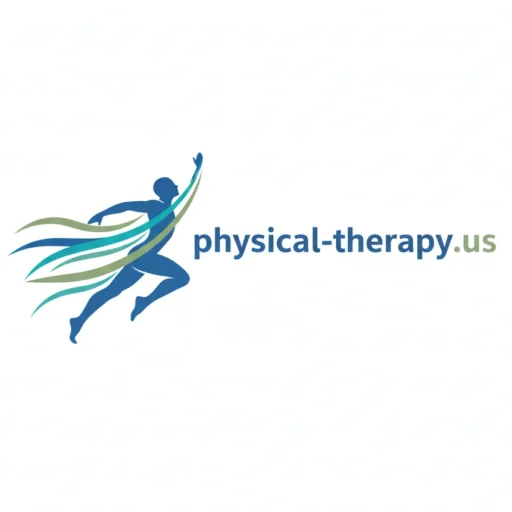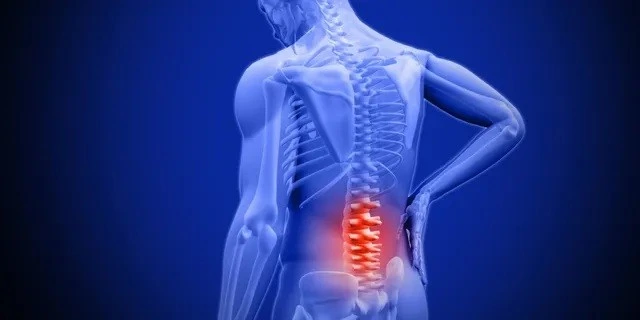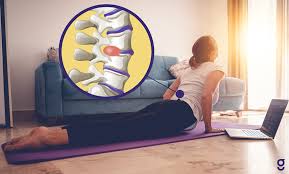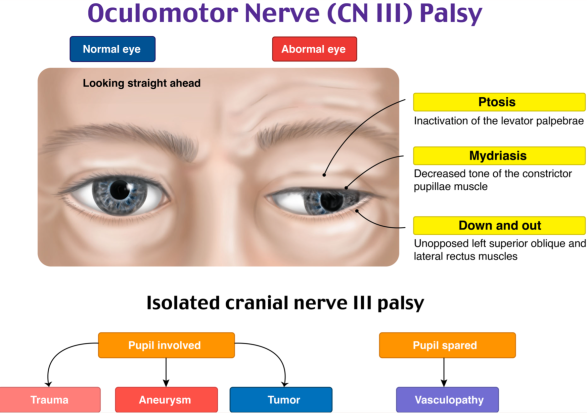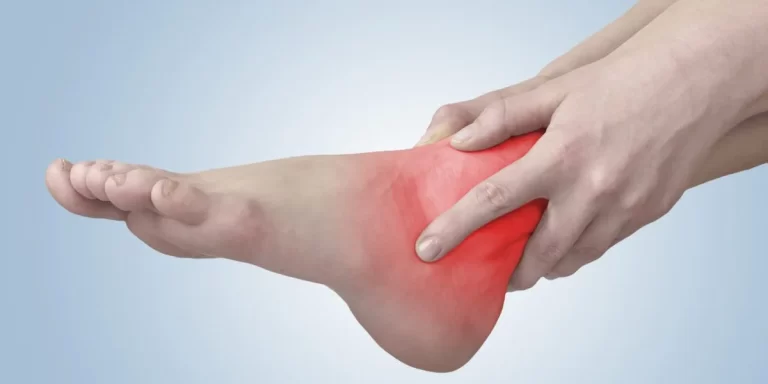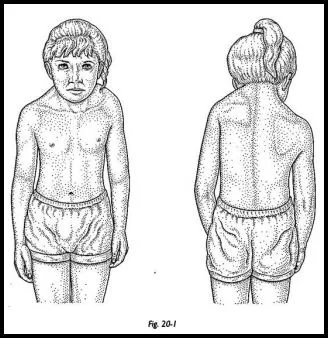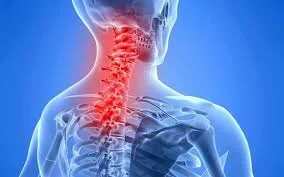Lumbar Strain
What is a Lumbar Strain?
A lumbar strain is an injury to the lower back’s (lumbar spine) muscles, tendons, or ligaments that is usually caused by overuse, poor lifting techniques, abrupt movements, or excessive force. Pain, stiffness, and restricted range of motion in the lumbar area of the spine are the hallmarks of this frequent disease.
Overuse, bad body mechanics, lifting large objects, sudden movements, or repetitive activities that place an undue amount of tension on the lower back’s muscles and ligaments are the usual causes of lumbar strains.
Since much of the information about lumbar strain is derived from peripheral muscle strains, this article will concentrate on muscular lumbar back sprains, which are stretch injuries or tears of the paraspinal muscles and tendons in the low back.
- When a muscle is strained, it experiences an excessive amount of tensile tension, which causes the myofibres to become overstretched and ultimately rupture close to the myotendinous junction.
- Physical or non-physical activity can cause acute mechanical back strains, with lifting being the most frequently remembered activity. Nonetheless, a third of patients might not recall an instigating event.
Clinically Relevant Anatomy:
Five powerful vertebrae, several bone components connected by joint capsules, Flexible ligaments and tendons, big muscles, and extremely sensitive nerves make up the lumbar spine. It is also quite flexible, allowing for movement in a variety of planes, including rotation, side bending, flexion, and extension.
The following muscles may be the source of lumbar strain: M. semispinales, Mm multifidi, Mm rotatores, M. erector spinae (M. iliocostales, M. longissimus, and M. spinalis), Posterior Serratus, and M. quadratus lumborum.
Epidemiology:
Low back pain affects 12–33% of people worldwide. Women and those between the ages of 40 and 80 have a higher incidence. It is unknown just how common low back injuries are throughout the world.
- Low back injuries account for 7–13% of all sports-related injuries sustained by collegiate athletes in the US. Muscle strains account for 60% of back conditions, whereas disc injuries make up 7%.
- According to a study conducted in Africa, the average lifetime prevalence of LBP was 62%, the average 1-year prevalence was 50%, and the average point prevalence among adults was 32%.
Causes of Lumbar Strain:
Injuries can harm the lower back’s muscles and tendons. Sports involving pushing and pulling, such as football or weightlifting, can cause lumbar strains. Additionally, sports like tennis, basketball, baseball, and golf that require quick twisting of the lower back might contribute to this disease.
The possibility of this injury can be raised by certain risk factors, such as tight hamstrings, forward-tilted pelvis or abdominal muscles, weak back, and excessive lower back curvature.
Symptoms of Lumbar Strain:
Symptoms could include:
- A sudden ache in the lower back
- Lower back spasms that cause further severe pain
- The lower back pains to the touch.
- Stiffness: The lower back may feel constricted and unable to move freely.
- Restricted range of motion: It could be painful to bend, twist, or carry out specific motions.
- Tenderness: Pressure or touch may cause the lower back to become sensitive.
- Swelling: The affected area may occasionally experience slight swelling.
Lumbar strain symptoms could resemble those of various diseases and medical issues. For a diagnosis, always consult your medical management provider.
Differential Diagnosis:
- Spondylosis
- Disc herniation
- Compression fracture
- Spinal stenosis
- Spondylolisthesis
- Ankylosing spondylitis
Diagnosis:
The diagnostic procedure for low back pain may involve the following in the preamble to a thorough physical examination and medical history. Nevertheless, specialist tests are typically not advised during various first assessments and exams.
- An X-ray is a diagnostic procedure that creates an image of the inside of organs, bones, and tissues on film.
- A computed tomography (CT) scan displays every organ, muscle, fat, and bone. Bones, fat, muscles, and organs can all be seen in full on a computed tomography (CT) scan.
- Magnetic resonance imaging (MRI): Large magnets, radio frequencies, and a computer are used in magnetic resonance imaging (MRI), a diagnostic procedure that creates a comprehensive image of the body’s internal organs and structures.
- Radionuclide bone scan: A radionuclide bone scan is a nuclear imaging method in which a tiny quantity of radioactive material is injected into the bloodstream for a scanner to detect. This test demonstrates both cell activity within the bone and blood flow to the bone.
- Electromyogram (EMG): A test used to evaluate the function of muscles and nerves.
Treatment of Lumbar Strain:
- Rest
- The back is covered with ice packs, heat, and compression.
- Exercises (to build muscle in the abdomen),
- Exercises to strengthen and stretch the lower back muscles while they recover.
- Instructions on how to wear and use the proper protection gear.
- Pain and inflammation may also be reduced using medications such as spinal injections and anti-inflammatory drugs.
Medical Treatment:
First nonpharmacologic treatment:
Spinal manipulation, acupuncture, massage, and superficial heat application are all used to treat acute low back pain. The American College of Emergency Physicians’ clinical policy states that opioids should only be used for patients whose pain is severe or cannot be managed with other drugs.
Non-pharmacologic methods, such as exercise, yoga, interdisciplinary rehabilitation, spinal manipulation, acupuncture, psychotherapy, low-level laser therapy, and electromyogram biofeedback, were suggested as the first-line treatments for chronic low back pain.
Once more, nonsteroidal anti-inflammatory drugs were recommended as the first-line pharmacologic medications, with duloxetine and tramadol coming in second. Opioid medication is only advised in cases when the previously listed treatments were ineffective; whether the benefit justifies the risk is a personal choice.
Physical Therapy Treatment:
- Comfortable adjustments, appropriate relaxation periods, and stretches performed during work. Ergonomic changes are adjustments made to the workplace to lessen employees’ physical stress.
- Prevention may be aided by teaching patients the value of maintaining proper posture and lifting practices.
- Frequent exercise
- Stopping smoking
- Obese patients’ weight loss
- Resuming regular exercise (new research indicates that regular exercise, within the bounds allowed by pain, promotes a quicker recovery than bed rest).
Techniques:
- Cold Therapy: To reduce localized tissue inflammation and edema during the severe stages of a lumbar strain, cold therapy (an ice pack) should be given to the affected areas.
- TENS and Ultrasound: To help manage pain and lessen muscle spasms, transcutaneous electrical nerve stimulation (TENS) and ultrasound are frequently utilized.
- Stretching: Easy stretching techniques with little movement. Below are some stretching exercises.
- With your heels on the floor and your knees bent, you can perform the double and single knee to chest rest on your back. Hold the position for eight to ten seconds after pulling your knee or knees as near to your chest as possible. Do this three to five times.
Backstretch: Bend your knees and slowly rotate them to one side while keeping your feet on the floor.
Start by lying face down on the ground. It’s crucial to keep your legs and hips relaxed and in contact with the floor while performing this exercise. Hold your hands shoulder-length apart. Hold your lower body relaxed with your hands as you inhale, exhale, and press up. Hold until you need to take a breath, then lower yourself, rest flat on the ground, and repeat eight to ten times.
Kneeling lunge(stretching iliopsoas)
Stretching piriformis
Stretching the quadratus lumborum. - Soft Tissue Manipulation: Research has shown that soft tissue manipulation enhances range of motion (ROM) and lessens pain.
- Massage.
- Strengthening Exercises: As soon as the pain and spasm are under control, you should begin to progress through the strengthening exercises. The abdominal muscles that require the greatest attention are the gluteals, trunk extensors, and obliques in particular. It is not helpful to put all of the focus on rehabilitation, particularly on the injured muscle. When it comes to treating lumbar strains and preventing low back pain, core stability training is crucial.
- Posture and body mechanics should be evaluated and adjusted as necessary, much like with spinal injuries.
Prevention of lumbar strain:
Maintaining strong and flexible core muscles, adopting optimal posture, and employing appropriate body mechanics when lifting and performing daily tasks are all important ways to prevent lumbar pain. Frequent exercise supports the spine and lowers the chance of injury. This includes back and abdominal muscle stretching and strengthening exercises.
Lower back tension can also be reduced by avoiding abrupt, jerky movements, keeping a healthy weight, and wearing supportive footwear or ergonomic furniture. Additionally, the risk of lumbar strain can be considerably decreased by practicing safe lifting practices, such as bending at the knees and keeping the load close to the body.
Complications:
Although they are uncommon, lumbar strain complications might happen, particularly if the problem is not adequately treated. Repeated or ongoing strain can cause muscle weakness, decreased flexibility, or persistent lower back pain, which can impair everyday activities and quality of life.
Inadequate recovery can occasionally lead to compensatory movement patterns, which raises the possibility of additional damage to the surrounding muscles or spine. Furthermore, severe strains that go untreated can eventually lead to the development of secondary disorders, including sciatica, postural abnormalities, or degenerative changes in the spine. To avoid these issues, prompt diagnosis, suitable treatment, and adherence to rehabilitation guidelines are crucial.
Prognosis:
A lumbar strain usually has a good prognosis, especially if it is treated quickly and appropriately. Depending on how severe the strain is, most people see noticeable relief in a matter of days to weeks.
Key elements of healing include pain treatment, physical therapy, rest, and a gradual return to exercise. Mild strains might go away immediately, but more serious ones might take longer to fully recover in terms of strength and flexibility.
Conclusion:
Overuse, bad body mechanics, lifting large objects, or repetitive tasks are frequently the causes. Muscle spasms, stiffness, restricted range of motion, pain, edema, and lower back pain are some of the symptoms.
Rest, medication-assisted pain management, physical therapy, cold and heat therapy, using supporting equipment like back braces, and adopting good posture and body mechanics are all part of the treatment. To ensure a precise diagnosis and individualized treatment plan, speaking with a medical professional or physical therapist is crucial.
FAQs
How should a lumbar strain be treated?
For the first six weeks after the pain starts, avoid doing any tasks requiring lifting heavy objects or twisting your back. Avoid exercising in the days immediately after the onset of pain. Start exercising again gradually after two to three weeks.
How can someone who has lumbar strain sleep?
Because it allows for appropriate, natural alignment, sleeping on your side is best for your spine. The lumbar area is not subjected to undue pressure like in other positions. This is not how muscles and nerves get twisted or bent.
Is it possible to massage a lumbar strain?
For many lower back issues, massage therapy can offer significant pain relief and healing. In particular, back strain pain can be managed at its source for more rapid and long-lasting relief when the right muscle is targeted.
Can lumbar strain be alleviated by walking?
It may not be your first instinct to get out of your comfortable couch, put on your sneakers, and go for a stroll when your back hurts. However, it might be.
Is a lumbar strain permanent?
In most cases, a lumbar strain is not irreversible. With conservative measures like rest, ice, or heat, and over-the-counter painkillers, the majority of lumbar strains resolve on their own in a few weeks. Pain that doesn’t go away after therapy, however, or that is severe or chronic, could be a sign of a more serious problem or the need for additional testing and care.
Does physical therapy help with back strain?
It can help you move properly again, lessen the likelihood that your back pain will return, and lessen lower back pain. Physical therapists offer guidance on how to take care of your back and employ various treatments to aid with lower back pain.
Is lumbar strain caused by sitting badly?
Long-term sitting can put a great deal of strain on the back, neck, arms, and legs, as well as increase the pressure on the spinal discs and the back muscles. It can also be a major source of back pain.
Can someone with lumbar strain walk?
To prevent further damage, anyone who strains a lower back muscle should take it easy. They shouldn’t completely cease moving, though. Painless, gentle motions can help hasten the healing process.
What is your sleeping pattern when you have a lumbar strain?
For lower back pain, lying on your side with your knees partially bent is the ideal position. Maintaining the knees bent reduces pressure on the lumbar spine and helps with body balance. To make this position more comfortable, many more people discover that placing a tiny pillow between their knees is supportive.
What is the quickest method for lumbar pain relief?
Walking, swimming, or even just stretching are examples of low-impact exercises that improve blood flow and aid in healing. Your chin’s muscles may become weak or rigid if you don’t move them, which worse low back pain.
How dangerous is a lumbar strain?
Muscle and tendon damage from lumbar strain can result in pain and soreness. The majority of low back pain can be resolved without surgery.
Does walking help people with lumbar sprains?
Walking works the muscles in your lower back and core, and strengthening weak muscles can help reduce low back pain caused by a sedentary lifestyle. Fatigue and an increased risk of injury can also result from weak muscles. Walking is a low-impact exercise that helps build stronger muscles all across the body.
How should a lumbar strain be treated initially?
Initial nonpharmacologic treatment: Spinal manipulation, acupuncture, massage, and superficial heat application are all used to treat severe low back pain.
How much time does it take for lumbar strains to heal?
Within a month, nearly 90% of people who have a lumbar muscular strain or sprain fully recover. In addition to anti-inflammatory medications, hot and cold treatments are advised as needed at home to treat sudden flare-ups of low back pain.
Why does lumbar strain occur?
Every day activities, such as working out or exercising, can cause a variety of lower back injuries. Heavy lifting is a common cause of lumbar strain and a risk factor for low back muscle strain.
References
- Dr.RaviPatel. (2023, July 2). Lumbar strain – cause, symptoms, treatment, exercise. Samarpan Physiotherapy Clinic. https://samarpanphysioclinic.com/lumbar-strain/#google_vignette
- Lumbar strain. (2024, October 9). Johns Hopkins Medicine. https://www.hopkinsmedicine.org/health/conditions-and-diseases/lumbar-strain-weight-lifters-back
